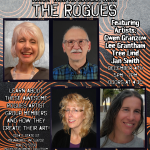A cosmic mystery- Astronomers find object flashing in both radio waves and X-rays
MILWAUKEE_Astronomers from teams around the world – including UWM scientists – have made a startling discovery about a new type of cosmic phenomenon.
The mystery object emits pulses of radio waves and X-rays. It’s the first time an object in this recently discovered class has been detected in X-rays.
For UWM Professor David Kaplan and research teams on the project, this particular object was unlike anything they’d seen before.
“The source turned out to be so, so bright – by a factor of 10 to 100 times brighter than most sources like this, even though it’s far away,” Kaplan said.
Kaplan and Akash Anumarlapudi, who just earned his PhD from UWM this month, are key members of the research team. They analyzed the data, did calculations and contributed as authors. Kaplan jointly led the survey that discovered the object.
Astronomers from the International Center for Radio Astronomy Research (ICRAR) in Australia, along with international teams, discovered the object, called ASKAP J1832-0911. They used the ASKAP radio telescope on Wajarri Country in Australia, part of Australia’s national science agency, CSIRO.
Astronomers correlated the radio signals with X-ray pulses detected by NASA’s Chandra X-ray Observatory, which was coincidentally observing the same part of the sky.
“Discovering that ASKAP J1832-0911 was emitting X-rays felt like finding a needle in a haystack,” said lead author Ziteng (Andy) Wang, of the Curtin University node of ICRAR.
“The ASKAP radio telescope has a wide field view of the night sky, while Chandra observes only a fraction of it. So, it was fortunate that Chandra observed the same area of the night sky at the same time.”
The object is part of a relatively new class called long-period transients (LPTs). They emit radio pulses that occur minutes or hours apart.
Currently, there is no clear explanation for what causes these signals, or why they “switch on” and “switch off” at such long, regular and unusual intervals.
For Kaplan, this latest discovery is an example of what happens with a little perseverance. “This is the benefit of trying multiple times. We didn’t think an X-ray signal was there,” he said. “And then we looked, and all of a sudden, it’s there again. Moreover, X-ray brightness tracks with the radio brightness.”
Detecting these objects using both X-rays and radio waves may help astronomers find more examples and learn more about them.
“This study doesn’t tell us definitively what these things are but helps us figure out what they are not,” Kaplan said.
The discovery also helps narrow down what the object might be. Because X-rays are much higher energy than radio waves, any theory must account for both types of emissions – a valuable clue.
NOTE: This press release was submitted to Urban Milwaukee and was not written by an Urban Milwaukee writer. While it is believed to be reliable, Urban Milwaukee does not guarantee its accuracy or completeness.






















